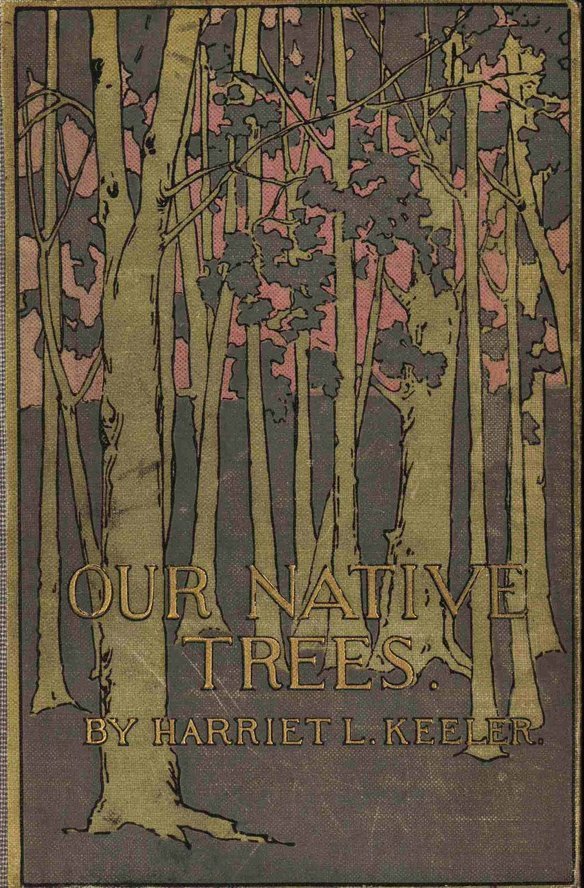Historical Context

Color blocking technique in use by an unknown designer, for the cover of Harriet Keeler's (OC Class of 1870) book "Our Native Trees."
The industrial revolution of the 19th century managed to massively shrink the costs associated with book production, while at the same time adding technical innovations. Meanwhile, the concurrent social revolutions taking place raised literacy rates and the disposable income of the rising middle class. This combination led to an explosion in demand for affordable reading material.
By the mid-19th century, in an increasingly crowded new book market, trade publishers began to employ colored decoration to cloth bindings, usually in the form of faux luxury shiny gold, or black stamped silhouette illustrations. These decorations served as a means to attract the eye of customers and wordlessly communicate meaningful aspects of the book’s contents. Color did add expense to the production of the book, and so was often limited. Designers began to employ color blocking, a technique that involves pairing two or more solid, bold colors together, and made use of the negative spaces to incorporate the cover cloth into the design for added affect. With the advent of improved color inking technology, the potential for design expanded considerably, leading publishers to seek out and commission artists to design their covers in the 1880s.
Artists of the period were naturally entwined with the design elements of the emerging Arts and Crafts and Aesthetic movements. They also pulled significant inspiration from Japanese themes, Moorish symmetry, and Arabic repetition, all of which were fashionable at the time. By the 1890s notable artists who developed distinctive style elements and employed individualized typography, often claiming ownership of their covers with small monograms. Art Nouveau would develop alongside of American trade publisher’s bindings sharing many design qualities.
Ed Vermue and Grace Elliot 2022




